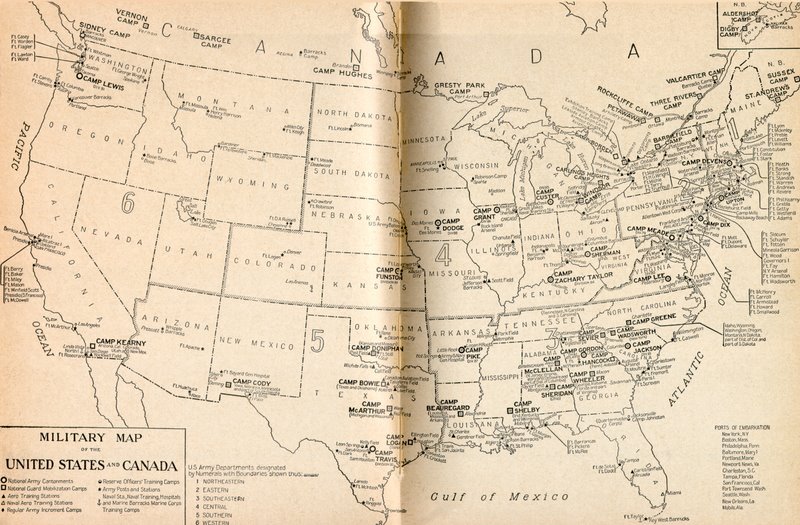
![{$text['mgr_orange1']}](../tng_placeorange.jpg) Anker 5
Anker 5
Camp Sewell, Manitoba, Canada
A First World War Training Facility for the Canadian Expeditionary Force
By Stuart Cook and Alan D Craxford
Please note: Links to maps and illustrations on this page lead to large images which may cause horizontal scrolling at standard screen resolutions
Introduction
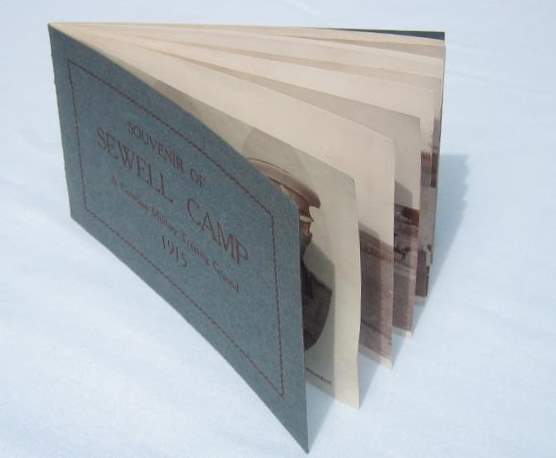
A Souvenir of Sewell Camp
My grandfather, Percival Joseph Anker, died tragically in France in action with the Canadian Expeditionary Force in the final days of World War I leaving behind his wife, Dorothy and two young daughters. My grandmother was sent several documents from the authorities and kept these along with other items and memories of her husband. After she died in 1930, the collection passed to my mother. Among those items I found a souvenir booklet dating from 1915 of Camp Sewell, Manitoba, where Percival was sent for part of his infantry training before he was sent overseas. We are aware of other photographs of this site, which has become a Canadian National Monument, but have not found reference to another complete copy of this booklet. My grandfather's story can be found at "Percival Joseph Anker, MM (1892 - 1918)". - STU Cook
The historical context
In 1909, a Canadian Military training camp named "Camp Sewell" was established 10 kilometers west of Carberry south of the Canadian Pacific Railway line. It started out as a city of tents and covered a large area. The name of the camp was changed in 1915 to "Camp Hughes" in honour of Major-General Sir Sam Hughes, Canada's Minister of Militia and Defence at the time. Extensive trench systems, grenade and rifle ranges, and military structures were built at Camp Hughes between 1915 and 1916, and a variety of retail stores and entertainment complexes on a double-avenued area close to the main camp formed a lively commercial midway. During World War I more than 38,000 troops of the Canadian Expeditionary Force trained at the camp, and by 1916 it had grown to such a large size that it had the largest population of any city in the province of Manitoba outside of the capital city, Winnipeg. Many of the soldiers who trained at Camp Hughes were later involved in the infamous Battle of Vimy Ridge in France on April 9, 1917. (2)

Schematic of the WWI trench system
Living conditions were spartan. "Beds were palliasses with straw. These had to be rolled up every morning before breakfast, and were placed in neat piles in front of each tent," recalled George Tomlinson from Moose Jaw, Sask. "Before eating, physical jerks using our rifles as barbells were the order of the day. A kindly [company commander] had arranged for a mug of hot cocoa prior to exercises. Ablutions were performed in the open air at a series of long wooden troughs with a cold water tap at one end. The soapy water ended in the pit dug and tended by men doing CB (company punishment) for some infraction of the King's regulations. (3)
Galbraith (See Further Reading) records that the "training trenches were constructed in 1915 and 1916 in an attempt to provide recruits with a realistic setting to prepare the soldiers in the new warfare that had developed in the Great War. The trench system at Camp Hughes was constructed to accommondate a full battalion of 1000 men at a single time; and, each unit was expexcted to spend at least one twenty-four hour period in the trenches. Before entering into the trenches troops were assembled at a staging area that often consisted of large dugouts located at the rear of the system. At Camp Hughes a similar feature was constructed called Dulmage Dugout (Named after an officer on headquarters staff).
The trench system at Camp Hughes was modelled after the three types of trenches that were constructed on the Western Front, each with its own purpose and function. The 'defensive / fighting' trenches consisted of a "front-line fire trench" or "jumping off trench" from where soldiers would enter into no-man's land to attack enemy positions, and a "support fire trench" designed to support the front line trench in an offensive or defensive manner. These types of trenches contained a parapet in the front that was built up for protection and a parados built in the back. These trenches ran in a zigzag pattern of generally ten yards in length and were called 'fire-bays'. The purpose of such a construction was that if the enemy captured a section of the trench the defending soldiers could still control the next section of the trench without fear of enemy fire killing every man down the length of the entire trench. 'Communication trenches' were constructed to allow for front to rear movement of supplies and troops from one defensive / fighting trench to another. These trenches had no parapet or parados since they were not intended for fighting, but contained so-called "island traverses" which served as a two way traffic marshalling point or as rallying points for defending troops to stop an enemy breakthrough if the defensive / fighting trenches were penetrated. The 'travelling trenches' were linear to the fighting / defensive trenches for the purpose of sending runners or the rapid movement of troops from one end of a fighting / defensive trench to the other. An 'enemy trench system' was also constructed approximately 200 metres away from the main trenches on a raised ridge in an attempt to mimic the situation on the Western Front where the Germans had occupied most of the high ground."
In 1933 the camp was dismantled and much of the material, including some of the buildings, were moved to nearby Camp Shilo. The area lay untouched, occasionally used for training in the Second World War. The Military History Society of Manitoba has worked on the site since 1988 under the aegis of the Provincial Archaeologist and has gathered a large quantity of artifacts, photographic and archival material. Because of the importance of the Camp Hughes site to the awareness and understanding of Manitoba's role in the First World War, it was designated as a Provincial Heritage Site in 1993 (4). Although very eroded after over 85 years, the original trench system at Camp Hughes is still intact and is the only World War One era trench system remaining in North America. Its position can be seen on this Google Map page.
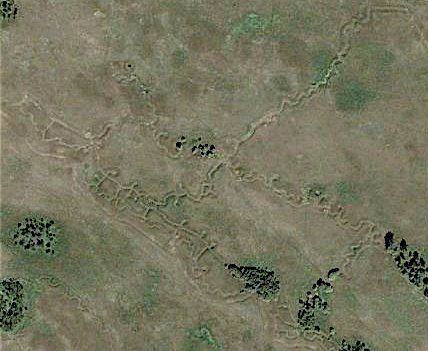
Trench outline
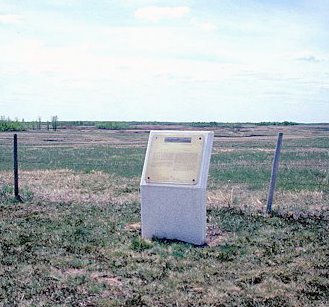
Dedication plaque
Further reading
Galbraith, W.R., Camp Hughes Under Threat (The degredation of a Canadian Archaeological Heirloom and Action Plan for Protection): A thesis presented to the Natural Resources Institute, University of Manitoba, Winnipeg 2004. NOTE: This is a pdf file: A free version of the Adobe Pdf Reader can be downloaded here:References
1. Military Map of the United States and Canada The People's War Book: History, Cyclopaedia and Chronology of the Great War (and Canada's Part in the War) by James Martin and H. S. Canfield; pages 270 - 271. The R. C. Barnum Co., Cleveland, Ohio. 1920
2) Camp Sewell: Wikipedia
3) The last Canadian summer: Canadian soldiers train at Camp Sewell before heading off to war: The Free Library
4) Camp Hughes: Manitoba Heritage Site The Military History Society of Manitoba
Please contact us
 If you have any questions or comments about the information on this site in general, or you have further information regarding this article, please Get in touch by leaving a message in our Guestbook. If you don't want the message to be added to the Guestbook, just say that in your text. We look forward to hearing from you.
If you have any questions or comments about the information on this site in general, or you have further information regarding this article, please Get in touch by leaving a message in our Guestbook. If you don't want the message to be added to the Guestbook, just say that in your text. We look forward to hearing from you.
Page added: June 8th 2010
Last updated: April 21st 2012
Photographs
The photographs are presented here in the sequence in which they were bound in the album. We have also copied the captions as printed.
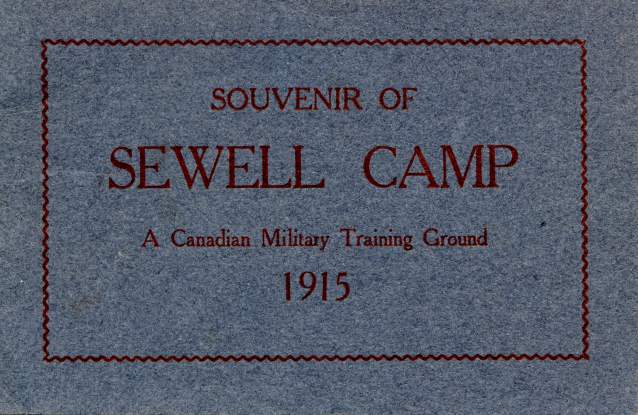
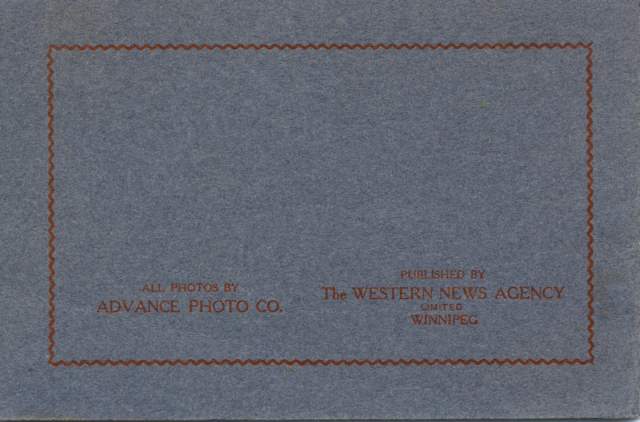
The front and rear covers of the booklet: The text reads: "All photos by Advance Photo Co." and "Published by the Western News Agency Ltd., Winnipeg"

The Senior Officers

Lord Strathcona Horse Lines
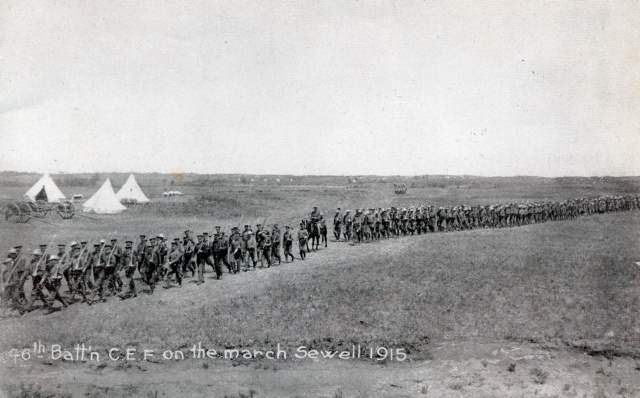
46th Battalion CEF
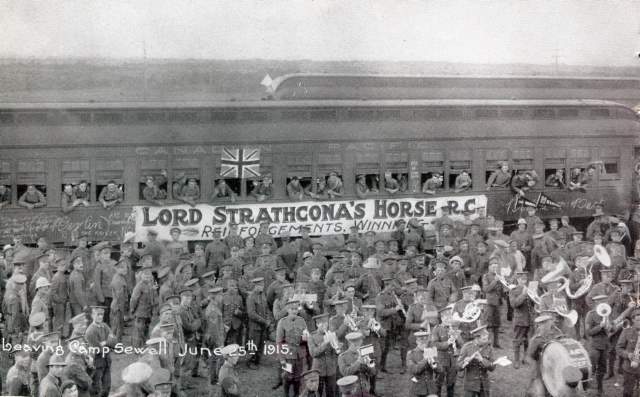
Leaving Camp Sewell
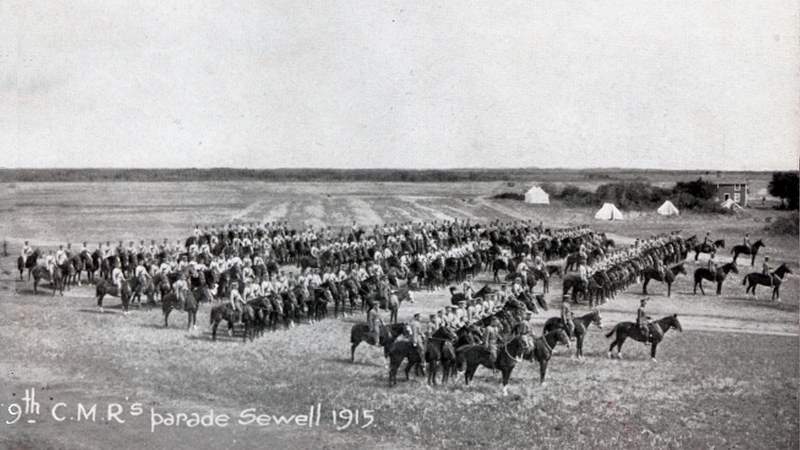
9th CMR's parade
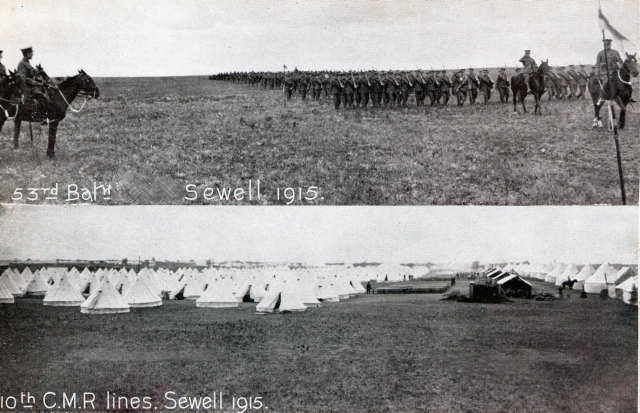
53rd Batn / 10th CMR lines
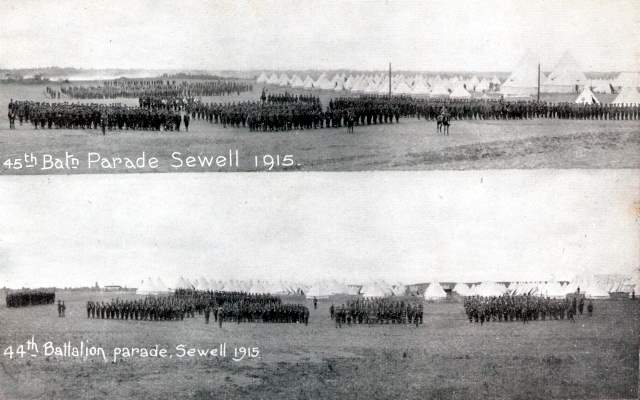
45th Batn /44th parade
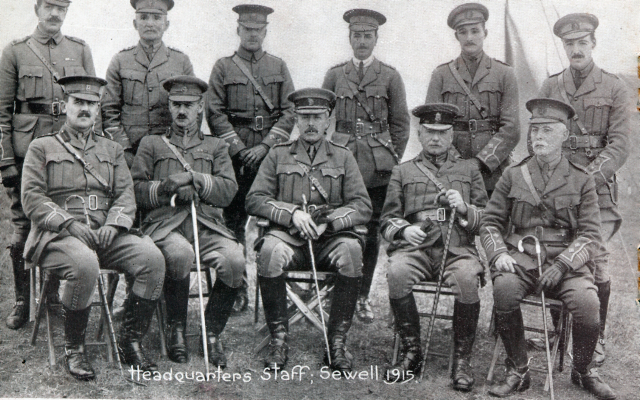
Headquarters Staff
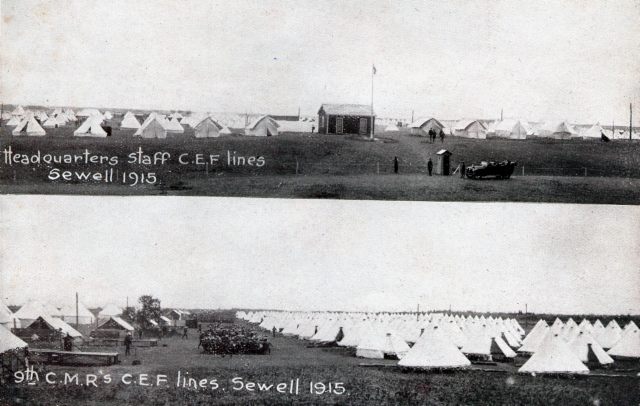
HQ Staff / 9th CMR's CEF lines
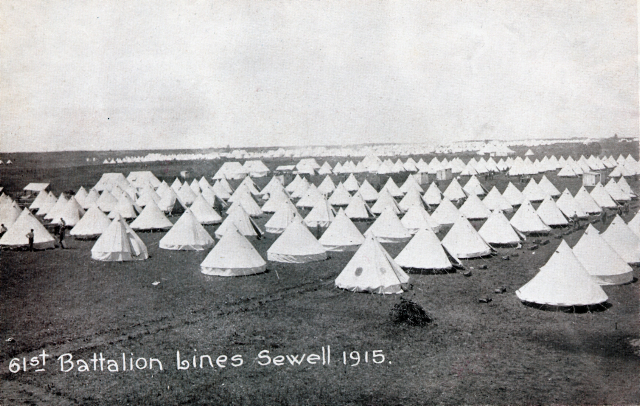
61st Battalion lines
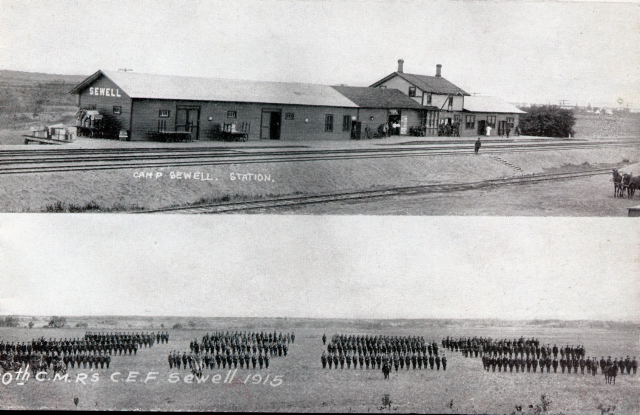
The Station / 10th CMR's CEF
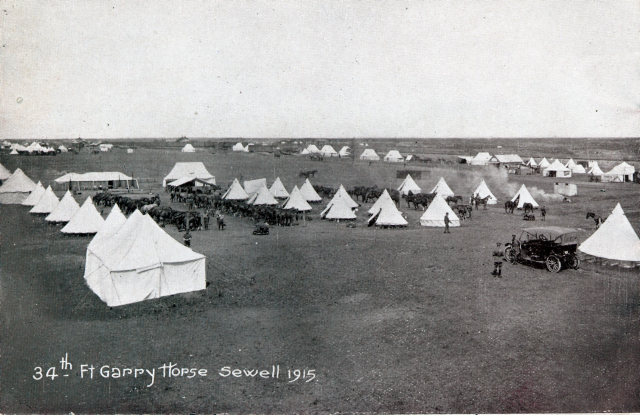
34th Fort Garry Horse

46th Battalion / 5th Artillery brigade

44th Battalion / Inspection of the CEF
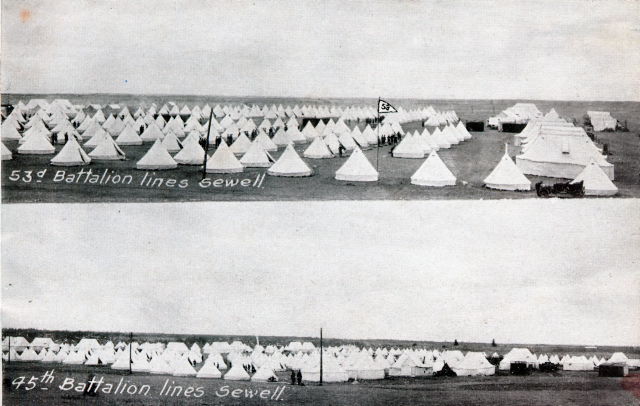
45th Battalion

Civilian facilities
Return to Top of Page
Translate this page:
Internet Beacon Diamond Site - 2010
© The Craxford Family Genealogy Magazine and individual copyright holders.Edited and maintained by Alan D. Craxford 2005 - 2024. All rights reserved. Contents may not be reproduced without permission.
You are not authorized to add this page or any images from this page to Ancestry.com (or its subsidiaries) or other fee-paying sites without our express permission and then, if given, only by including our copyright and a URL link to the web site.















